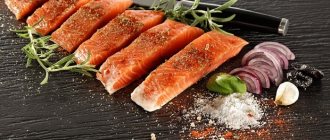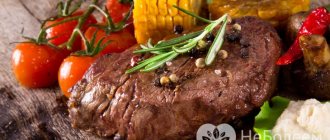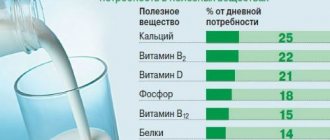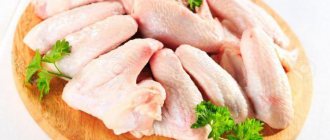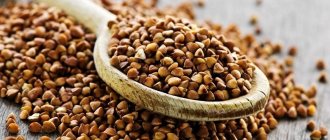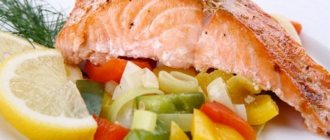Sausage has long been one of the most popular food products of modern man. This delicacy has a lot of both advantages and disadvantages, so before you buy sausage, you need to know for yourself whether it will become superfluous in the diet of a particular person.
The traditional sausage recipe is to mix minced meat with spices, fat and salt and place the mixture in the gut or a substitute. Those who invented sausages at one time simply reinvented the wheel in the culinary business, since with the help of this delicacy it became possible to quickly and tasty serve the table for any holiday, and the storage of meat products was extended many times over. Today there are many types of sausages, which, unfortunately, are not always of high quality.
History of origin
Content:
- History of origin
- Types of modern meat products
- Production Features
- Differences in grades of finished products
- Benefits and harms of the finished product
- Homemade product
Sausage was first written about in Greek, Babylonian and Chinese chronicles dating back to 500 BC. Later, Homer described them in his “Odyssey”, and Epicharmus even had a written comedy “Sausage”. However, all this is not evidence that the Greeks were the progenitors of modern meat delicacies, they were simply the first to write down their recipes and therefore remained in history.
The ancient Romans also fell in love with this delicacy, because with its help it became possible to store meat products in the heat for a long time. The Romans stuffed the cleaned intestines with minced meat, salted it, added spices and hung the product in the shade so that it could dry.
It was also from there that the tradition of smoking sausage over a fire originated, since when cooked in this way it could last much longer and, moreover, was safer in terms of sanitary standards, since the smoke killed all microorganisms, midges and other insects that could live in meat.
In different historical times, the sausage recipe, although it changed, always remained very complex, with a large number of ingredients and technological aspects of preparation. In addition, the product was initially expensive, since in ancient times, cooks used the best varieties of various meats (even dolphin meat), Madeira, expensive cognac, nuts and Indian spices to prepare the delicacy.
There were many legends about the product, which made it even more expensive and desirable for ordinary people who did not have the opportunity to enjoy it. In the Middle Ages, Europeans in the north learned to prepare sausage from raw meat, which was then dried for a long time through smoke. But basturma appeared thanks to the ability of Europeans in the south to dry raw meat in direct sun.
The most developed producers of meat products in Europe at all times were considered to be the Germans and Austrians, who even today produce many types and varieties of all kinds of meat delicacies, famous throughout the world for their taste.
The name “sausage” has many legends describing the origin of this product, and which of them is closer to the truth is a mystery. It is known that there are consonant words in the Turkic, German, French languages, as well as in Hebrew. Back in the 12th century, sausage was mentioned in ancient Russian documents, but then, until the 17th century, historians found no mention of this product in Rus'. Only in the 17th century, when immigrants from Germany opened sausage workshops in Russia, did this product again firmly enter the life of the Slavic peoples.
By the beginning of the 20th century, there were about 2,500 sausage shops and factories on the territory of the Russian Empire. In Soviet times, another type of previously unknown sausage was invented - boiled sausage. For example, “Doctorskaya” became an experimental food product in the 30s of the 20th century, which had a high pork content, a delicate structure, and this product was prepared without the use of smoking.
This sausage was intended for medical institutions and people with poor health.
After World War II, this meat product became even more popular, but its quality dropped greatly from year to year and reached a critical level in the 80s.
Vegetables
If you want to lose weight, you should eat vegetables in large quantities. They have a lot of fiber, vitamins and other useful components. Most of them are low-calorie foods. This, in turn, also promotes fat burning.
Protein vegetables = good combination.
| Product | Water | Squirrels | Fats | Carbohydrates | kcal |
| Eggplant | 91,0 | 0,6 | 0,1 | 5,5 | 24 |
| Swede | 87,5 | 1,2 | 0,1 | 8,1 | 37 |
| Green peas | 80 | 5,0 | 0,2 | 13,3 | 72 |
| Zucchini | 93,0 | 0,6 | 0,3 | 5,7 | 27 |
| White cabbage | 90 | 1,8 | — | 5,4 | 28 |
| Red cabbage | 90 | 1,8 | — | 6,1 | 31 |
| Cauliflower | 90,9 | 2,5 | — | 4,9 | 29 |
| Potato | 76,0 | 2,0 | 0,1 | 19,7 | 83 |
| Green onion (feather) | 92,5 | 1,3 | — | 4,3 | 22 |
| Leek | 87,0 | 3,0 | — | 7,3 | 40 |
| Bulb onions | 86,0 | 1,7 | — | 9,5 | 43 |
| Red carrots | 88,5 | 1,3 | 0,1 | 7,0 | 33 |
| Ground cucumbers | 95,0 | 0,8 | — | 3,0 | 15 |
| Greenhouse cucumbers | 96,5 | 0,7 | — | 1,8 | 10 |
| Sweet green pepper | 92,0 | 1,3 | — | 4,7 | 23 |
| Sweet red pepper | 91,0 | 1,3 | — | 5,7 | 27 |
| Parsley (greens) | 85,0 | 3,7 | — | 8,1 | 45 |
| Parsley (root) | 85,0 | 1,5 | — | 11,0 | 47 |
| Rhubarb (petiole) | 94,5 | 0,7 | — | 2,9 | 16 |
| Radish | 93,0 | 1,2 | — | 4,1 | 20 |
| Radish | 88,6 | 1,9 | — | 7,0 | 34 |
| Turnip | 90,5 | 1,5 | — | 5,9 | 28 |
| Salad | 95,0 | 1,5 | — | 2,2 | 14 |
| Beet | 86,5 | 1,7 | — | 10,8 | 48 |
| Tomatoes (ground) | 93,5 | 0,6 | — | 4,2 | 19 |
| Tomatoes (greenhouse) | 94,6 | 0,6 | — | 2,9 | 14 |
| Green beans (pod) | 90 | 4,0 | — | 4,3 | 32 |
| Horseradish | 77,0 | 2,5 | — | 16,3 | 71 |
| Cheremsha | 89,0 | 2,4 | — | 6,5 | 34 |
| Garlic | 70 | 6,5 | — | 21,2 | 106 |
| Spinach | 91,2 | 2,9 | — | 2,3 | 21 |
| Sorrel | 90 | 1,5 | — | 5,3 | 28 |
Types of modern meat products
In modern sausage making, there are several main types of this product.
Boiled. This is the cheapest and most common type of product, which has a short shelf life and the most dietary composition, compared to other representatives of sausages. This product contains up to 15% protein, up to 30% fat, its calorie content is 220-300 kilocalories. “Varenka” contains less meat, but more water, additives, and soy protein. The minced meat for this product is light pink, homogeneous, and very tender. Boiled sausage is prepared by pasteurization at a temperature of 80 degrees and further two-stage cooling.
Boiled and smoked. Unlike “varenka”, this product is prepared by pasteurization followed by smoking. The calorie content of such a product is 350-420 kilocalories, it contains up to 17% protein and up to 40% fat. Minced meat contains many different additives - flour, milk, lard, starch, water, cream, and the shelf life of such a product is 2 weeks.
Semi-smoked. When making semi-smoked sausage, water and ice are introduced into the minced meat, further cooling the composition, the loaf is kept at a temperature of 0 degrees for about 6 hours and only then is it smoked. A semi-smoked product can contain up to 17% protein and up to 40% fat, and its calorie content reaches 400 kilocalories. This product is stored for 15 days.
Raw smoked (hard smoked). This is a fairly fatty (up to 55% fat in the composition) sausage with a high calorie content of about 550 kilocalories. It can be stored for a month. Produced using cognac and spices, the minced meat must mature for 10 days, and then the finished sausage matures for about 40 days and is smoked at a smoke temperature reaching 25 degrees. The product contains about 30% protein.
Dry-cured. It is stored for a very long time, prepared from the highest quality meat and many spices and additives - honey, cognac, garlic, cumin. The finished product dries naturally, without an additional source of heat or smoking. This product contains 35% protein, 40% fat and up to 470 kilocalories.
Liver. Sausage, which is made from offal, eggs, vegetables and other additives. It has the consistency of paste and the not very appetizing grayish color of the loaf. The energy value of liver products, depending on their composition, can vary from 194 to 444 kilocalories. Such sausages are stored from 3 to 30 days.
What does caloric content depend on?
As we have already understood, it is a mistake to trust the original calorie content of a product. Frying absolutely always makes the product less healthy and maximizes the energy value. Associated factors can also increase the negative impact.
For example, our favorite sunflower oil is harmful. Therefore, we suggest you consider several alternative options. For frying in a pan, it is better to use the following oils:
- Ghee. This product contains health-promoting linoleic acid. It enhances metabolism.
- Coconut oil obtained by cold pressing. It consists of almost 100% saturated fat.
- Extra virgin olive oil. This is perhaps the best and most affordable option. Even during prolonged heating, olive oil retains all its beneficial properties.
We recommend taking a look: The concept and meaning of calories.
Production Features
In the production of sausage, several technological processes can be used, depending on the variety and type of product obtained. The main points of the production process are:
- the process of deboning or separating animal carcasses and separating bones and meat to produce minced meat;
- trimming, that is, sorting the meat component into fatty and lean, as well as the distribution of the semi-finished product by grade - first grade, second, and so on;
- the process of minced meat preparation, when ingredients are sequentially mixed to produce one or another minced meat, and then they are crushed using sausage cutters;
- the process of molding a product or filling product casings with minced meat using special syringes, followed by sealing the ends of the casing with a clipper;
- the precipitation process, which involves keeping the loaves at low temperatures until the start of heat treatment, according to the production technology of a specific type of product;
- Heat treatment includes drying, frying, smoking or boiling sausage in heat chambers, as well as steaming or cooling the finished product.
It is important to remember that the casing for the product is of great importance in the production of sausage. Sausage casings are divided into artificial and natural, permeable and barrier.
Barrier casings serve to increase the shelf life of finished products and are more often used for cooked sausages.
Permeable shells help heat penetrate during subsequent heat treatment of the product. Thus, polyamide shells are barrier, and experts classify cellulose, collagen and textile shells as permeable artificial ones. All kinds of food additives are used in the product to prevent the proliferation of microorganisms in minced meat, as color, taste and weight enhancers of the product, and they are not always permitted, healthy or safe.
Sausage comments
- It's disgusting if the sausage is bought in a store! You can get poisoned... But many people buy it because they are used to living like this. I definitely won’t feed my children these products.
- When I read about blood sausage, I almost felt sick. I don't know how to eat it at all. And who came up with it, why did they come up with it? There are many other alternatives you can eat. And why make the sausage yourself if everything is for sale?
- Orthodox believers should not eat any sausage! These are animals! We eat a lot of things that we shouldn't. But people don't understand. Many people don't understand, unfortunately. And I can't control the whole world. And I wouldn’t want to, because it’s a responsibility.
- I'm always on a diet. I don't eat sausage. And I don’t eat sausages and don’t crave them! And what? I wouldn't die without them! Even without a diet, I would eat little, because I have a lot of worries in my personal life.
Differences in grades of finished products
The grade of meat used to produce sausage depends on the percentage of muscle or connective tissue it contains. The higher the grade of sausage you buy, the higher the grade of meat from which it is produced, and the less of the above components this meat contains.
Despite the fact that the connective tissue of meat is also a protein, it is difficult for the human body to absorb and is less digestible. The nutritional value of connective tissue is low; there is a lot of it in foods such as brawn, liver, and jellied meat.
Today there are such varieties of sausages as:
- premium products;
- first class products;
- ungraded sausages;
- second class products.
Only liver and blood sausages are not graded; the rest can be presented in any of the above varieties. Moreover, any sausage of the same type can have a different price, since manufacturers reserve the right to independently choose the ingredients, the quality of the casings and much more, which will certainly ultimately lead to an increase or decrease in price. It is most logical to buy expensive sausage, wanting to get the highest quality and tasty product on your table.
Today, among boiled sausages, there is another variety of sausage - the extra variety.
These are high-quality products of traditional recipes with a high protein content (and therefore more valuable in their energy properties). The extra grade product should not contain various food additives, with the exception of sodium nitrite and phosphates. Also, this sausage should be low in fat and free from soy and carrageenans.
Sausage fried in oil in other servings:
296
2.96
| Qty | A portion | Calories | In the counter |
| 100 g | 296 | ||
| 1 g | 2.96 | ||
| 1015 | 1 package = 343g | 1015 | |
| 142 | 1 serving = 48g | 142 | |
| 252 | 3 oz = 85g | 252 |
Benefits and harms of the finished product
Is there a healthy sausage? This question can be answered in the affirmative in the context of the fact that any sausage largely consists of protein, which means it is a source of energy for the human body. But this state of affairs may be violated by manufacturers’ failure to comply with the standards by which this delicacy is prepared.
Recently, natural ingredients in sausage products are increasingly being replaced with artificial ones; many food additives are added to the product, which improve the visual and taste perception of the sausage, but significantly reduce its digestibility by the human body.
Among the main health problems that can arise from the abuse of sausage, experts call obesity, since such products are very high in calories, problems with the gastrointestinal tract and liver, since this product is difficult for the body to digest, and its fatty component does not have the best effect on the liver.
In the presence of pancreatitis, ulcers, cholecystitis, gout, cardiovascular diseases, high cholesterol, hypertension and urolithiasis, the consumption of sausage should be minimized, or better yet, completely excluded from the diet.
When choosing quality sausage, you need to know a few simple rules. For example, to find out whether a product contains starch, you can dip it in iodine at home, and if the sausage turns blue, it is full of starch.
Best materials of the month
- Coronaviruses: SARS-CoV-2 (COVID-19)
- Antibiotics for the prevention and treatment of COVID-19: how effective are they?
- The most common "office" diseases
- Does vodka kill coronavirus?
- How to stay alive on our roads?
Also, when rolling a slice of sausage into a tube, the product, which contains a lot of starch, will break or crumble, and if it passes such a test, it means that the manufacturer did not add unnecessary ingredients to the recipe.
Among all kinds of additives in the production of sausage, there are those without which such production is in principle impossible. For example, sodium nitrite or E-250 blocks the growth of botulism pathogens in minced meat.
This ingredient also acts as a color stabilizer for the finished product. But manufacturers add phosphates to sausage in order to retain a large amount of moisture.
This powdery substance can add weight to the finished product without increasing the proportion of meat ingredients in the composition. Thus, producers sell water to consumers at the price of meat.
In general, consumers should remember basic facts about this product when purchasing sausages. So, all sausage is divided into meat, meat-containing and meat-vegetable, which in addition to meat also contains soy or cereal. There are no varieties of meat-containing products.
Among the main production additives allowed by standards are eggs, milk, soy isolates, carrots, cereals, seaweed, and animal proteins. When buying sausage in a natural casing, it is important to know that it is stored much less than its analogues in artificial casings.
Recipe with egg
For breakfast, many of us cook scrambled eggs and sausage. Agree, this is a quick, filling snack, and you definitely won’t feel hungry until lunch. In addition, the answer to the question of how many calories are in a fried egg with sausage is pleasantly surprising - 265.9 Kcal. This, of course, is far from a dietary indicator, but still not the highest.
You can prepare the ingredients in an unusual way:
- fry a rectangular slice of doctor's sausage on one side;
- after the edges have bent, break one egg inside so that it does not leak out;
- cover with a lid and wait for the protein to cook;
- Place the finished egg and sausage on top of the bread and garnish with a sprig of parsley and vegetables.
We talked about how many calories are in tea here.
So, we looked at how many calories are in different types of fried sausage. If you are watching your figure, such food is, of course, not the best option. But by following a few simple rules, you can minimize the harm.
We suggest you read: How to correctly calculate calories for weight loss.
Sausages and sausages increase the risk of cancer
On the European market, sausages and sausages typically contain between 68 and 94% meat. According to WHO recommendations, the dose of meat for a healthy diet should not exceed 500 g of raw product per week. Remember that meat contains various harmful substances, including excess iron and lectin in the form of sialic acid, or Neu5Gc, which interferes with the functioning of the nervous system. Excessive consumption of protein and red meat causes an increase in the level of insulin-like factor IGF-1 in the blood.
As shown by the EPIC (European Prospective Investigation into Cancer and Nutrition) study, excess IGF-1 can cause breast, prostate and colorectal cancer. In addition, the type of meat consumed affects the risk of developing lung cancer.
Consumption of red meat increases the risk of developing lung cancer by about 35%, and in the case of frequent consumption of poultry, the risk decreases to 10%.
Also, excess animal fat in the diet can lead to the accumulation of bile acids in the colon, which are then broken down by intestinal bacteria into deoxycholic acid and carcinogens. That is why you should limit your consumption of sausages and sausages and mostly consume other healthy foods. Take care of yourself and always be healthy!
Unhealthy fat contributes to atherosclerosis
Sausages contain many types of harmful compounds. This group also includes cholesterol oxidation products - oxysterols, which arise during heat treatment of meat. Their source can be several times used fried fats, both animal and vegetable origin. In addition, oxysterols are formed in the human body, for example, by enzymatic oxidation of cholesterol. Oxysterols have a stronger pathophysiological effect than cholesterol, promoting the development of atherosclerosis. In addition, they disrupt the functioning of immune cells such as macrophages and smooth and epithelial muscle cells. Studies indicate immunosuppressive, carcinogenic, mutagenic and cytotoxic properties of oxysterols. It is believed that they may increase the risk of developing neurodegenerative diseases, including Alzheimer's, Parkinson's, and Huntington's diseases.
The fat contained in sausages and frankfurters is a source of saturated fatty acids. Because the human body easily produces these compounds, they are not a necessary food ingredient. Since they are very energetic, 1 g of product contains up to 9 kcal, this promotes the growth of fat in the body. Saturated fatty acids cause an increase in the level of “bad cholesterol” in the blood. This contributes, among other things, to the formation of cardiovascular diseases, including coronary heart disease, hypertension, and stroke. As scientists note, atherosclerotic changes already occur in almost people over 15 years of age.
How does boiled-smoked sausage differ from similar varieties?
Currently, the manufacturing process of all products is automated; meat products are divided into several types.
Smoked-boiled
The cooking cycle consists of two stages. Initially, the sausage is smoked and then boiled until fully cooked. The product contains more seasonings and may consist of small pieces of meat. Additives are used: flour, lard, starch, milk or soy and seitan.
Semi-smoked
This type of product differs from the previous version in the method of preparation - first it is fried, then boiled and only then smoked. The taste of the finished smoked meat is felt less. The product has a long shelf life. But it must be stored under special conditions, which can be found in the article at the link.
Raw smoked
This type of meat product does not undergo heat treatment, but is cold smoked at temperatures up to 25 degrees. For meat or minced meat, a process of fermentation and dehydration is carried out. The ripening period takes a long time - up to 1.5 months. During this time, excess moisture disappears, and the meat acquires a characteristic smell and amazing taste.
Modern technologies make it possible to produce a product in less time. To do this, use the food additive E575, spices, and yeast, which accelerate fermentation. However, you can prepare raw smoked chicken at home from natural raw materials without additives. Recipes for making raw smoked sausage can be found in the article at the link.
Smoking at home
Meat for the smokehouse should be well salted. Smoking with a weak smoke, gradually increasing the heat. With the hot method, the fire should not get too hot.
For smoke, sawdust from deciduous trees is used. Spruce or pine are not used: they give the product a bitter taste. Can be flavored with mint and juniper branches.
Hot smoking is carried out as follows: the meat is prepared in accordance with the recipe, loaded in the form of sausages into the smokehouse chamber. Wood chips with sawdust are placed at the bottom, a tray is placed under the meat so that fat does not drip onto the wood chips. Smoking time depends on the amount of meat and the recipe.
